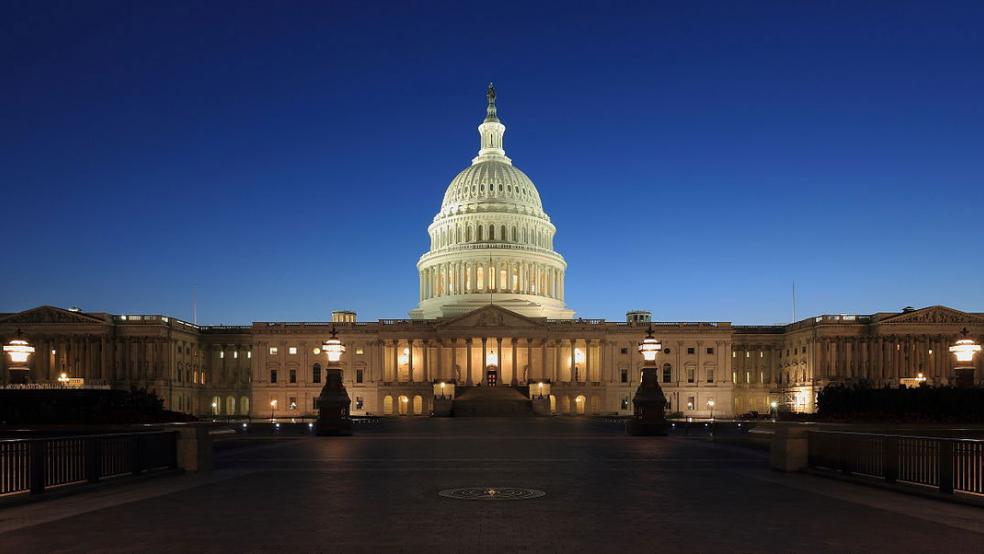The Republicans running Congress are poised to spend most of July, at the very least, focused on trying to find some kind of agreement on a deal to repeal and replace the Affordable Care Act. Having left town for the July 4th recess without bringing a bill to the floor, let alone to a vote, the Senate will try again in the brief three-week interval between their return from their current break and their next one, a five-week stretch that will have them out of town until early September.
If there’s an air of urgency to their work when they return to work, it will be for good reason. After their second summer break ends, they will be about a month from the end of Fiscal 2017, which presents a pair of competing problems.
Related: Senate Republicans Now Favor Taxing the Rich. Wait, Whaaat?
First, in order to avoid a government shutdown, Congress will need to come to some kind of agreement for Fiscal 2018 spending. And second, if there is no health care bill completed, lawmakers will be looking at a hard September 30 deadline for passing a 2017 budget reconciliation bill, the vehicle Senate Republicans are counting on to avoid a Democratic filibuster of their effort to overturn Obamacare.
While only one of those bills is truly must-pass legislation, the Republican Senate will likely treat both as similarly vital. That’s because their effort to repeal the Affordable Care Act can’t pass under regular order, and the budget reconciliation loophole for 2018 is already earmarked for tax reform. So, this could be Republicans’ last shot to ram through a health care bill that doesn’t require them to compromise with Democrats.
Just to add a little more drama, by the time September comes around, the country will also be facing yet another run-in with the federal debt ceiling, the artificial barrier Congress erected that prevents the Treasury from borrowing the money it needs to pay for obligations Congress itself has already approved.
Technically, the nation hit the debt ceiling some time ago, in March, specifically, when a temporary agreement to suspend it expired, slamming the brakes on additional Treasury borrowing. The government, since then, has been making its payments to creditors by delaying the internal transfer of funds and other so-called “extraordinary measures.”
Related: Why State Governors Are Freaking Out About the GOP Health Plan
As always, the extraordinary measures can only last so long before the Treasury starts facing the prospect of actually failing to pay money it owes on time. And assurances to the contrary notwithstanding, it doesn’t matter who the US government stiffs first. Bondholders, defense contractors, or retirees, it’s all the same to the next creditor considering what interest rate to offer on federal debt. A borrower who can’t pay someone else today may not be able to pay you tomorrow, so creditors will want compensation for that risk in the form of higher interest rates.
According to an estimate released by the Congressional Budget Office last week, when Congress returns from its August recess, it will have, at best, about six weeks to come to an agreement on raising the debt ceiling.
“If the debt limit is not increased above the amount that was established on March 16, 2017, the Treasury will not be authorized to issue additional debt that increases the amount outstanding. (It will be able to issue additional debt only in the amount of maturing debt or the amounts cleared by taking extraordinary measures.)
“That restriction would ultimately lead to delays of payments for government programs and activities, a default on the government’s debt obligations, or both. CBO estimates that without an increase in the debt limit, the Treasury, by using all available extraordinary measures, would most likely be able to continue borrowing and have sufficient cash to make its usual payments until early to mid-October of this year.”
Related: Why Trump’s Rollback of Clean Air Rules Could Cost Taxpayers Billions
It would be a mistake, to put it kindly, to assume that six weeks is enough time for Congress to come to an agreement on the debt ceiling, particularly when members are juggling health care reform and a new budget resolution at the same time. Lawmakers have, in the past, battled for months over whether and how to increase the federal borrowing limit. It creates a legislative chokepoint, and vastly increases the leverage of small groups of lawmakers who are willing to play chicken with Congressional leadership and the White House over potential federal default.
In short, it looks more and more likely that Congress is going to have to cram three extremely volatile legislative efforts into the confined space of four-to-six weeks that begin in September. And they’ll have to do it knowing that the current occupant of the Oval Office seems to like nothing better than playing with matches.





